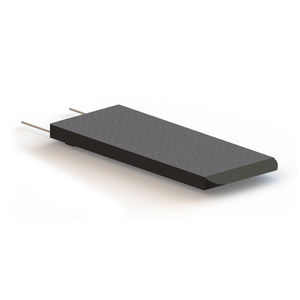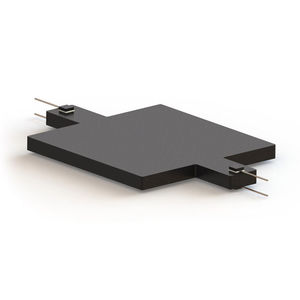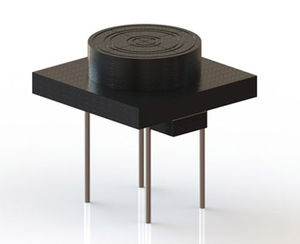
- Industrial machines and equipment
- Heat Exchanger and Refrigeration
- Cartridge heater
- Bach Resistor Ceramics GmbH
Cartridge heater
Add to favorites
Compare this product
Description
Cartridge heaters made of silicon nitride are normally rectangular. In the hot area they are cylindrically ground to fit. Various dimensions and batch sizes can be produced. The cartridge heaters have a cylindrically ground hot zone with a range of operation up to 1 000 °C and a cold zone in the contact area. They have been manufactured in small series for many years and can be configured for different line voltages. They are used where metal cartridge heaters come up against their limits or are chemically corroded. The special properties and low mass of the ceramic material allow fast heating rates, uniform temperature distribution and outstanding precision in control. The insulating ceramic material surrounding the ceramic conductor is high voltage-resistant.
Customized design
Our in-house designs make any modification in size, configuration, or performance simple and convenient. The cartridge heaters can be processed to fit precisely so that proper heat transfer to the receiving bore hole is guaranteed. The different thermal expansion of ceramic material in comparison to metal should be considered.
Advantages
Your advantages:
Ceramic cartridge heaters are economically applied in processes where metallic cartridge heaters are limited or subject to corrosion
Areas of application
brazing machines
vacuum technology
machine building
R&D - laboratory equipment, measuring and testing equipment, reactors
tool heating
Catalogs
No catalogs are available for this product.
See all of Bach Resistor Ceramics GmbH‘s catalogsOther Bach Resistor Ceramics GmbH products
Ceramic heating elements
Related Searches
- Resistance heater
- Heater
- Electric heater
- Cartridge heater
- Flat resistance heater
- Ceramic resistance heater
- Metal hot plate
- Igniter
- Electric hot plate
- Ceramic hot plate
- Precision hot plate
- Piping heater
- Flat heater
- Round heating element
- Burner igniter
- Soldering hot plate
- Gas igniter
- Ring heating element
- Fuel oil igniter
- Ceramic igniter
*Prices are pre-tax. They exclude delivery charges and customs duties and do not include additional charges for installation or activation options. Prices are indicative only and may vary by country, with changes to the cost of raw materials and exchange rates.










